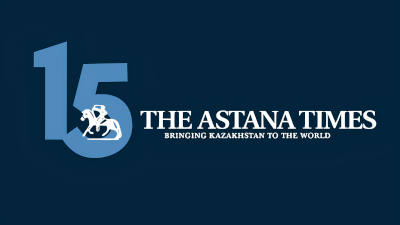ASTANA — Archaeologists in the Kostanai Region have intensified research into the Bronze Age settlement of Kamysty discovered in 1986. The latest excavations have uncovered artifacts and metallurgical remains that shed light on the lives of ancient communities and their role in early metal production.
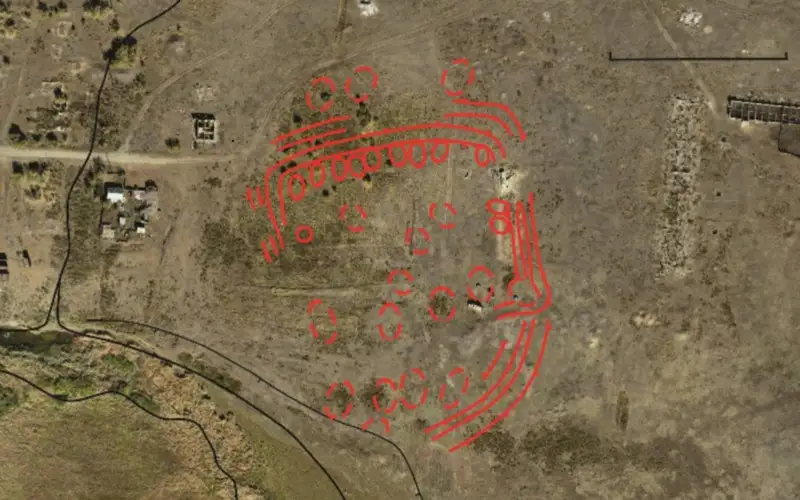
The Kamysty settlement was first identified in 1986 through aerial photographs from 1956. Photo credit: Kazinform
Rediscovered past
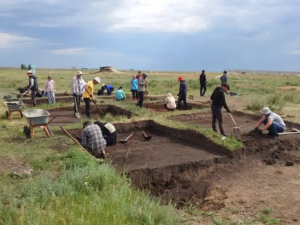
Archaeologists in the Kostanai Region have intensified research into the Bronze Age settlement of Kamysty. Photo credit: Kazinform
The Kamysty settlement was first identified in 1986 through aerial photographs from 1956. Renowned Kazakh archaeologist Viktor Logvin visited the site in 1991, but comprehensive excavations only began in 2021, led by his son, archaeologist Andrey Logvin, and a team from the archaeological laboratory at the Kostanai Regional University named after Ahmet Baitursynuly.
“Research at Kamysty has been conducted intermittently, and only in recent years, thanks to support from the department of culture, we managed to establish a systematic study of the settlement,” said archaeologist Irina Shevnina.
Shevnina noted that the project brings together specialists from Kazakhstan, Russia’s Yekaterinburg and Moscow, and the United Kingdom, allowing the researchers to apply modern archaeological techniques and reach more accurate conclusions.
Over 10,000 artifacts unearthed
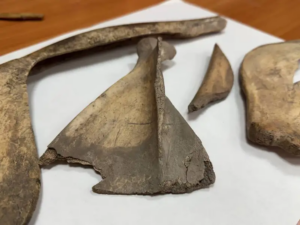
Fragments of animal bones. Photo credit: Kazinform
Excavations have yielded more than 10,000 artifacts, with ceramic fragments and animal bones comprising the bulk of the finds. However, there is a notable scarcity of metal objects despite Kamysty’s classification as a Bronze Age site.
“Many broken and whole ceramics have been found in the settlement, according to which scientists are trying to reconstruct the shape of ancient vessels, their purpose and manufacturing technology. In addition, there are animal bones,” said Shevnina.
“The analysis of the remains help us to understand which animals were bred by the ancient inhabitants of the settlement. Judging by the findings, their primary food sources were cattle, sheep, goats and horses. Bone products were mainly used in everyday life as shovels, scrapers, and knives,” she said.
Where is the bronze?
Why there are so few bronze artifacts remains a matter of speculation among scientists. One possible explanation is that the settlement’s inhabitants were metallurgists who produced bronze goods primarily for trade rather than local use. But this pattern is not unique to Kamysty.
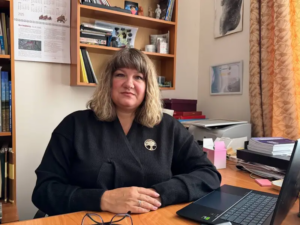
Irina Shevnina. Photo credit: Kazinform
“For example, in the Chelyabinsk region [in Russia], where more than 30 similar settlements have been found, there is also very little ready-made metal. Not as much as here, of course. Overall, if you look at the numbers, it is approximately 15-20%,” said Shevnina.
“This is most likely because they were indeed metallurgists, and their main purpose was smelting for trade. There is even a version that they did not actually live in these settlement cities permanently — they may have seasonally smelted metal there and then moved elsewhere to spend the winter,” she said.
Traces of ancient industry
Despite lacking finished bronze objects, the Kamysty site bears unmistakable evidence of metallurgical activity, including slag, casting molds and smelting traces. Researchers uncovered a large dwelling containing four wells, three furnaces, and a pit believed to have served as a refrigerator.
“Now we are exploring how it all functioned — building different 3D models. We have brought in archaeometallurgists to analyze the system, and they will guide us on what to investigate further,” said Shevnina.
A settlement shaped by multiple cultures
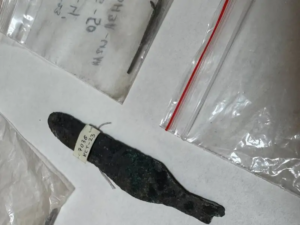
Broken and whole ceramics found at the settlement. Photo credit: Kaziform
According to Shevnina, Kamysty reveals layers of history that span several ancient cultures, each living their mark over a 4,000-year period. Archaeologists are now examining these layers to understand the site’s evolution better.
“Kamysty includes Sintashta culture — literally the very beginning. Then came Petrovka culture, which is closely related, one flowing into the next. We also see clear signs of Andronovo culture. This can be said with confidence due to the presence of pottery from various periods. It shows that these cultures succeeded one another over time. But the foundation was laid by the Sintashta. They were the first,” said Shevnina.
The article was originally published on Kazinform

